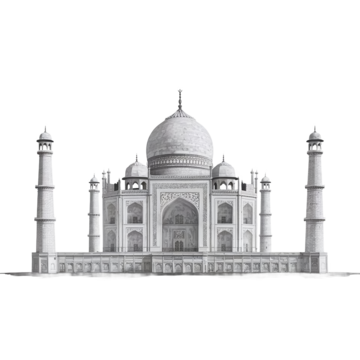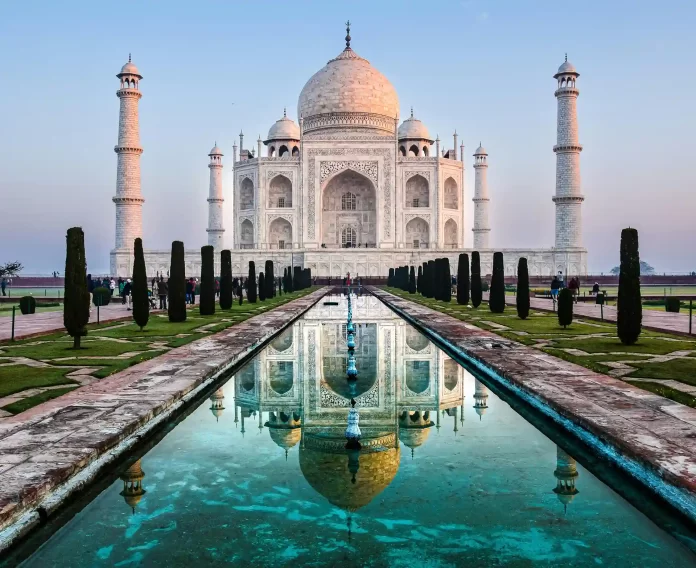Shocking Facts about Taj Mahal: Blog on Culture and Social History
The Taj Mahal stands as a testament to the exquisite beauty and remarkable craftsmanship of Mughal architecture, a fusion of Islamic, Persian, and Indian architectural styles. This architectural wonder holds several fascinating facts:
Majestic White Marble Construction
The Taj Mahal was meticulously constructed using pristine white marble, sourced from the neighboring town of Makrana. This pure material lends a luminous glow to the monument, enhancing its ethereal charm.

The Magnificent Main Dome
Crowning the Taj Mahal is its magnificent main dome, soaring to a height of 240 feet (73 meters). This splendid dome is encompassed by four graceful smaller domes, creating a harmonious and captivating ensemble.
Protective Minarets
Surrounding the Taj Mahal are four minarets, each towering at 130 feet (40 meters) in height. Ingeniously designed, these minarets tilt slightly away from the main tomb, ensuring that in the event of an earthquake, they would fall outward, safeguarding the precious structure from potential harm.
Strategic Placement
The strategic placement of the minarets is equally noteworthy. Positioned just outside the primary platform of the Taj Mahal, they were intentionally constructed to prevent any possibility of collapsing onto the tomb, demonstrating the meticulous planning and engineering prowess behind the monument’s creation.
Graceful Entrance and Surroundings
The Taj Mahal’s main entrance, situated on the south side, welcomes visitors with its grandeur. It is accompanied by two magnificent red sandstone structures—a mosque and a guesthouse—that gracefully flank the entrance, further enhancing the architectural splendor of the complex.
Exquisite Carvings and Inlays
The Taj Mahal mesmerizes with its intricate carvings and inlays adorning the walls and pillars. Skilled artisans employed an array of precious stones, including jade, amethyst, lapis lazuli, and turquoise, to create breathtaking patterns and designs, adding an unparalleled level of opulence to the monument.
Symbolic Placement of Tombs
Delving into its deeper symbolism, the Taj’s houses the tombs of its eternal residents, Mumtaz Mahal and Emperor Shah Jahan. The tomb of Mumtaz Mahal, for whom the monument was erected, lies directly beneath the main dome, while the tomb of Emperor Shah Jahan rests beside hers, symbolizing their eternal bond.
Serene Mughal Gardens
Embracing the Taj Mahal are resplendent gardens, meticulously designed in the classical Mughal style. These captivating gardens feature a central pool and four enchanting walkways radiating outward, providing a serene and harmonious ambiance.
To read about the reason behind the construction of the Taj Mahal – Click here

